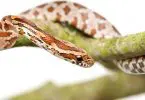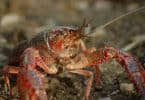Turtles are real food beggars. Whenever you come in front of them with some food, they ask so earnestly for it as if they have been hungry for weeks!
Bet you cannot play with their little guts carelessly even if they are not willing to protect it, right. Our pet turtles need a lot of attention as they are living in an exotic environment, experiencing a completely different habitat from their wild being.
So, among all the factors, including breed, grooming, disease protection, and housing, diet still remains on the top.
Now, the most critical question is that if your little fella is asking for food all the time, is it hungry? Have you never fed it enough? Or if it doesn’t give you any impression ever, does it means it doesn’t feel hunger? How are you going to determine when to feed your turtle and when to avoid it?
The answer to all these questions and a lot more about your turtle’s behavior toward foods, its preference, and diet is discussed in this article. So, keep scrolling to the end, and don’t forget to pen down essential points in your little pet diary.
Table of Contents
How Do I Know If My Turtle Is Hungry?
The diet and hunger of a turtle are directly related to its habit in the wild. However, before getting into that, let us talk about the thing for which you came here in the first place.
Your Turtle Is At The Food Bowl:
Turtles develop a habit of moving towards food bowl when it gets hungry. They term it as their feeding source, so they look for their food in it. Even you may see your turtle sitting in the bowel and eating from the corners, the leftovers from the previous meal.
All this indicates that it cannot take its peristaltic movements anymore and wants to satisfy its hunger.
It Is Scrapping The Walls:
When your turtle does not find food on its spot, it starts its efforts to look for it. For this purpose, it wants to escape from the tank and look for the food on its own. Scrapping the walls of the tank is for the same purpose.
If you see this, do not make your turtle wait anymore.
Turtle Is Excited At Your Sight!
While it may happen every time, you go towards your turtle. They will ask you for food and want you to feed them a lot. However, when they are really hungry, they will move towards you quickly and lift their head more than usual.
Turtles tend to mark the person feeding them as a source of their food and associate with them. Even turtles are smart enough to smile at you or give you a happy expression to get food from you!
You may read more about turtle’s intelligent behavior at Are turtle’s Smart?
So, if you haven’t fed your turtle for long, and it is excited at your sight, show some kindness and feed it some food. This will also make your relationship better with your pet.
Your Turtle Is Roaming The Whole Tank.
If your turtle is abnormally moving from one area of the tank to another, it clearly means it is looking for its food. When it doesn’t find food at its designated place, it may start searching for it. In the quest, it searches every corner of the tank.
So, when you see it, it’s time you feed your little friend.
Now, you know the signs your turtle show when it is hungry. However, all of them can be misleading too!
Turtle’s are the kind of opportunistic feeders. They eat for the whole time. Or precisely until the food is available. So, let us talk about the portion size, feeding schedule, the reason why the turtle is always hungry, and what will happen by overfeeding your turtle.
Portion Size Of A Turtle:
The amount of food you feed to your turtle varies from species to species. However, as for general rule, feed your turtle an amount it can eat in 15-20 minutes. You can then remove the rest.
For example, An adult box turtle eats three big tablespoons of salad with 2-3 earthworms/pellets in a day.
Even if your turtle is a real slow eater, do not exceed more than one cup per feed for an adult turtle in the beginning. You may also increase or decrease the food depending upon the response of your pet. But for the beginning, 1 cup quantity is a real safe bet.
For pellets having 8 to 12 pellets with some veggies and worms are the best diet for an adult turtle. Moreover, you may also need to sprinkle the food with some multivitamins and calcium if your pet is struggling with its deficiency.
And do not forget to chop the pellets into 4 for the juvenile one. Moreover, any food greater than the size of a raspberry must be mashed in order not to choke the tiny throat. This practice should also be preferentially considered for adult turtles to ensure easy swallowing.
For detailed information on turtles food options, dietary schedules, and feeding patterns, you may read our article on What Do Turtles Like To Eat.
How Often Should I Feed My Turtle?
Juvenile turtles should be fed daily. In contrast, adult turtles may be fed every other day. Some turtles may also be fed twice a week.
The precise feeding schedule is heavily dependent on the turtle breed.
Juvenile turtles are growing fast; therefore, they need more food for proper growth. With advancing age, their hunger and dietary needs also go low, depending upon their level of activity and other factors.
As your turtle ages, you may need to work on adjusting the food frequency and the type of diet you are going to feed. You may select between an animal or plant-based diet depending upon your turtle’s breed.
Why Is My Turtle Always Hungry?
An Opportunistic Feeder:
they get food. It is because, in the wild, they don’t get to reach enough food sources owing to survival competition. Or you may say they cannot get enough of their favorite food, such as crickets, fish, worms, and shrimps. Moreover, they never know when it will get its next meal.
So, whenever your turtle gets its hands on any kind of food, it binges on that like eating for the last time.
You As A Food Source:
Ever wondered why your little turtle always shows its excitement whenever you go in front of it or even just pass by its tank. It is because you are its major food source!
You must be thinking your turtle is not getting any scarcity of food while it stays at your home. So, why has it been so greedy?
The answer is the same. Yes, your turtle is smart enough to recognize its surroundings and the people living with it. However, it never trusts the situation blindfolded, most importantly on its survival which depends mainly on housing and food. Therefore, they never give up the habits they developed in the wild (even after living with you for more than two decades).
So, rather you fed it just 10 minutes ago, your arrival is always linked to feast time.
Your Turtle May Not Be Getting Enough Nutrients:
Another uncommon and unpopular opinion about turtles being hungry all the time is that they are not getting enough nutrients, multivitamins, or minerals through their food. This lacking is making them ask for food to replenish their stores.
How To Deal With A Turtle That Is Always Hungry?
Feeding a balanced diet is the best way to make your turtle feel full. If your turtle does not lack energy and nutrients, its hunger will automatically start tapering off.
Another very practical option is including more protein in the diet of your turtle. Proteins take a long time to digest, so their stomachs will remain full for a long time. On the other hand, carbohydrates from plant-based materials are digested readily, making your turtle ask for food again after a short turtle.
For an adult turtle, you may include protein pellets and worms in the diet every other day. Vegetables and other food options may be included in the diet twice a week.
Do Turtles Know When To Stop Eating?
Seeing your turtle ask for food all the time makes you think that your turtle does not get the feeling of fullness. However, the feeling of fullness is something physiological, and turtles have developed this behavior over generations by facing a lot of food scarcity. Have you ever saw a chubby obese turtle in the wild? Obviously, no. Therefore, this behavior is essential for its survival.
So, although your pet seems hungry, it’s actually not the case. In fact, it is its instinct pushing it into keeping asking for food. Even they may ask for food to the extent that they cannot eat anymore and vomit out all their stomach content. They will then eat their vomited content too!
Disgusting, right. But that is how they developed for their survival.
So, you do not have to feed your turtle every time it asks for food. Moreover, you need to develop a feeding schedule for your turtle to avoid overfeeding it.
What Will Happen If You Overfeed Your Turtle?
As turtles always ask for food, most of the owners mistakenly overfeed them. This does no good to their pet but is an absolute health failure leading to damage of multiple vital organs.
Let us discuss the most common signs you see when you overfeed your turtle:
Signs Of Overfeeding A Turtle
Following are the most common signs of an overfed turtle:
- Obesity
- Kidney damage
- Liver damage
- Organ failure
- Premature sexuality
- Excessive shell growth.
- Shell pyramiding
- Yellow tinged eyes
- Bloating of limbs
- Lethargy
- Frequent Vomiting
Let us talk a bit about the most serious problems here.
Obesity:
Obesity can be lethal to your turtle. It can lead to heart diseases, joint diseases, and also organ failure.
It is easy to indicate obesity in your turtle.
- If your turtle retracts its legs into its shell and there are visible thick folds, know that your turtle is obese. The folds are thick and meaty and protrude out.
- If you have two or more turtles of the same sex and breed, and one of them is getting bigger than than the other, it is being overfed. Two turtles of the same sex and breed must have the same size approximately.
- In hoard, turtles tend to oppress each other, or one of them steals more food. This can cause the obesity of the one in malpractice. However, different breeds have different growth rates. Also, females turtles are usually bigger than males.
Organ Damage:
Fatty liver or hepatic lipidosis can be equally damaging in turtles as in humans. Overfeeding is the main cause of kidney and liver damage in turtles.
If you do not address the problem on time, these diseases can lead to complete hepatic and renal failure.
It is easy to understand the way that damage to these organs leads to the metabolic failure of your pet. The immune system will eventually get weak, which can be fatal due to lethal bacterial and viral infections.
The same can happen in the case of other organs. Thus, multiple organ diseases can occur, which can progress to complete damage.
Pyramiding In Turtles
Shel pyramiding or excessive growth of the shell is another basic sign if you are overfeeding your turtle.
The two parts of the turtle’s shell are called scutes. If you observe that the middle of each scute is abnormally raised or is popping out more than the rest of the shell, it indicates shell pyramiding.
Turtle’s shells are primarily made of calcium so, this overgrowth is also the form of metabolic bone disease. Most of the time, it is due to overfeeding your turtle, especially pellets.
This pyramiding leads to the squeezing of vital organs in the body of the turtle.
So, you see, overfeeding your turtle is not your love but hatred for them shortening their lifespan.
How Do You Know If A Turtle Is Starving?
Now, the basic question is, how would you know if you are adequately feeding your turtle and your turtle is not malnourished.
The answer is really simple. Always follow a feeding schedule and stick to it. Moreover, feed a well-balanced diet to your turtle, so your turtle does not go deficient in any nutrient.
Remember that turtles are made to fight with harsh conditions, even with extreme food shortages. They can go weeks without eating a single bite.
However, if your turtle is not eating or has stopped eating abnormally, you need to be worried about its health. Or there is something disturbing to it.
To know more about the reasons Why Your Turtle Is Not Eating, give a read to our article on that.
The Important Point To Go!
- First thing first, a turtle’s stomach is not as large as you might think it to be. And most of the organisms need their stomach to hold their food. Turtles have a stomach size not more than the size of their head. Now, you can understand how little they should eat in one go.
- A turtle is termed a baby turtle if it is less than seven years old. Turtles in their juvenile form tend to eat more (quantity and frequency). However, you may start off with tapering the amount and frequency of food as they pass off their 3rd year. If your turtle starts eating less, it’s time to plan on shifting its food choices and timings. However, do not forget to consult your vet to rule out all the possibilities of illness.
- Never overfeed your turtle. Even if it is constantly asking for food, if you are feeding enough food to your pet at its designated time, you do not need to feed it again.
- Look for the signs of overfeeding and obesity in your turtle.
- Consult your vet if your turtle has abnormally stopped eating.
I hope this article cleared all your queries. In case of any more questions, drop down the comment or contact us. We would be happy to help.








